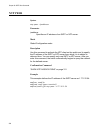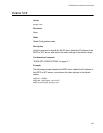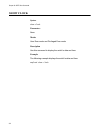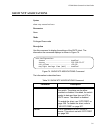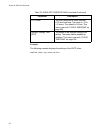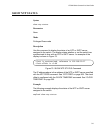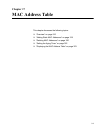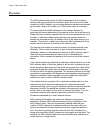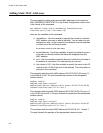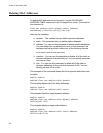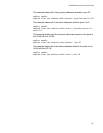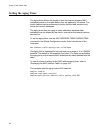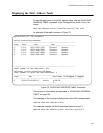
Chapter 17: MAC Address Table
316
Overview
The MAC address table stores the MAC addresses of all the network
devices that are connected to the switch’s ports. Each entry in the table
consists of a MAC address, a port number where an address was learned
by the switch, and an ID number of a VLAN where a port is a member.
The switch learns the MAC addresses of the network devices by
examining the source addresses in the packets as they arrive on the ports.
When the switch receives a packet that has a source address that is not in
the table, it adds the address, along with the port number where the
packet was received and the ID number of the VLAN where the port is a
member. The result is a table that contains the MAC addresses of all the
network devices that are connected to the switch’s ports.
The purpose of the table is to allow the switch to forward packets more
efficiently. When a packet arrives on a port, the switch examines the
destination address in the packet and refers to its MAC address table to
determine the port where the destination node of that address is
connected. It then forwards the packet to that port and on to the network
device.
If the switch receives a packet with a destination address that is not in the
MAC address table, it floods the packet to all its ports, excluding the port
where the packet was received. If the ports are grouped into virtual LANs,
the switch floods the packet only to those ports that belong to the same
VLAN from which the packet originated. This prevents packets from being
forwarded to inappropriate LAN segments and increases network security.
When the destination node responds, the switch adds the node’s MAC
address and port number to the MAC address table.
If the switch receives a packet with a destination address that is on the
same port on which the packet was received, it discards the packet
without forwarding it on to any port. Because both the source node and the
destination node for the packet are located on the same port on the
switch, there is no reason for the switch to forward the packet. This, too,
increases network performance by preventing frames from being
forwarded unnecessarily to other network devices.
MAC addresses learned by the switch are referred to as dynamic
addresses. Dynamic MAC addresses are not stored indefinitely in the
MAC address table. They are automatically deleted when they are
inactive. A MAC address is considered inactive if the switch does not
receive any frames from the network device after a specified period of
time. The switch assumes that the node with that MAC address is no
longer active and that its MAC address can be purged from the table. This
prevents the MAC address table from becoming filled with addresses of
nodes that are no longer active.



